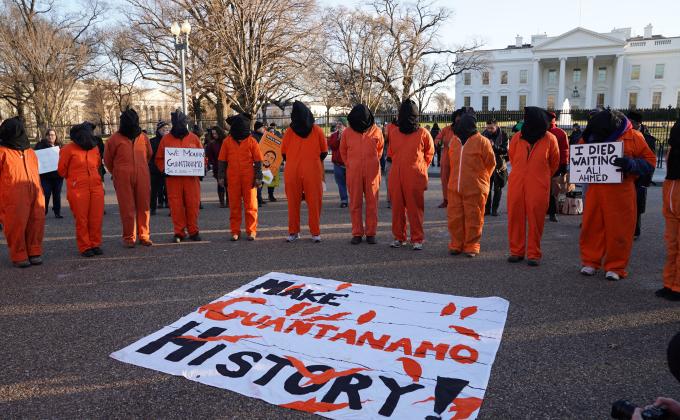Earlier this month, ICCT Visiting Fellow Phil Gurski examined whether governments should consider offering ‘amnesty’ for foreign fighters fleeing the Middle East. He concluded that the arguments in favour of such a strategy - such as getting ‘formers’ to denounce so-called Islamic State (IS) - were not strong enough to outweigh the need to punish those who joined a barbaric terrorist group. As this assessment was in-part inspired by an article in which I’d made the case for an amnesty or plea bargain, I thought I’d re-visit my proposal and clarify how it could work in light of his comments.
There are three elements of the returning foreign fighter problem that make it so challenging, and the scale of the problem so uncertain.
Firstly - and particularly for signatories of the Schengen Agreement - the risk that fighters return home undetected. Secondly, when returnees are identified, their reason for returning is unclear. And finally, for those detected and arrested, the difficulties of securing meaningful convictions for terrorist offences committed in a war zone thousands of miles away.
Ongoing military operations in the Middle East are targeting the foreign fighter contingent. These air strikes, and the continued use of foreign fighters as suicide attackers, means the size of the potential returnee problem is likely to slowly reduce over time.
However, there are practical limitations to relying on a solely military response, not least the sheer scale of the foreign fighter problem. For countries targeting their own citizens, human rights concerns and questions regarding the rule of law limit how broadly a military option can be used. This means that despite military progress in Iraq and Syria, a significant outflow of foreign fighters remains likely.
Which is why now might be the time for governments to consider an alternative approach; one that reduces the number of foreign fighters for whom current location or future intentions are unknown.
This would be done via a foreign fighter amnesty or plea bargain scheme. The scheme’s broad aim would be to repatriate foreign fighters disillusioned with life with IS, but prevented from returning home by fear of a long prison sentence or their inability to leave the Middle East. Returnees would be expected to plead guilty to one or a range of terrorism offences in exchange for a reduced (but still sizeable) prison sentence.
Further mandated requirements could include participation in CVE or de-radicalisation programs, cooperation with intelligence agencies, and a public renunciation of IS and their ideology. But while these secondary requirements would be valuable, they would not be the principal purpose of the scheme. Nor should the scheme be sold on their intangible and often difficult to define value.
Instead, the central purpose would be a simple one - reliably incarcerating returned foreign fighters, reducing the short-term threat that they pose.
By focusing on the outcome rather than the process or connotations of the terminology, the advantages to this approach over the status quo are clear.
As Gurski notes, whether under an amnesty or the status quo, it is next to impossible to determine the true motivations of returnees or to judge with certainty in a criminal context what offences they might have committed in Syria and Iraq.
But foreign fighters returning under the scheme (rather than under their own steam) would be required to provide an admission of guilt pre-arrival. They would be doing so in the knowledge that this admission would be used to imprison them. And while the sentence they received would be discounted, a maximum sentence is only meaningful when a government has sufficient admissible evidence to secure it.
‘Encouraging’ foreign fighters to return might seem like an obvious way to increase the terrorist threat. But by managing the process and ensuring immediate incarceration, the scheme reduces the obvious risks associated with their return. In contrast, countries across Europe currently have dozens if not hundreds of returnees, many of whom are yet to face prosecution, or have received such short sentences that they are already back on the streets.
Gurski rightly points out that a scheme offering any hint of leniency towards individuals associated with IS would face one enormous hurdle - public opinion. Having warned of the foreign fighter threat, could any government encourage their return by offering leniency?
Based on the reaction to both our articles, one way to address this would be a re-branding. ‘Amnesty’ appears to be too loaded a term to be successful, particularly as it is so often associated with the offer of leniency as a conciliatory gesture. In contrast, here the offer of leniency would merely be a means to an end - reliably convicting returning foreign fighters.
Perhaps then, plea bargain is a more accurate description, even if its use at scale and to achieve the conviction of the individual receiving leniency would be unusual. Whatever terminology is used, branding and the arguments used to ‘sell’ the concept will undoubtedly be critical.
One potential solution is to apply the principles of the scheme, but in an ad-hoc and discrete way. Security and policing agencies could reach out to individuals via their lawyers or family, outlining the potential terms of the deal available to them, and the timescales in which they would need to respond. While the end-result would be the same, this could avoid some of the public backlash.
But whether described as an amnesty, plea bargain, or individual disruption plan, debate over the value of this approach should be on the end state, not the process or name.
The scheme is not born out of a desire for reconciliation - as Gurski notes, there is a need to punish those who have joined IS. The scheme would achieve this aim; and though there would be no guarantees against recidivism on their release, it would reduce the short-term threat.
Even if the scheme is unlikely to be overwhelmed with applicants, any take up would help reduce the size of the overseas problem (which by its very nature is more difficult to monitor). By peeling off the less-committed parts of the foreign fighter network, authorities could be more certain that those remaining were deserving of their full attention (and resources).
And from a counter-narrative perspective, dozens of foreign fighters defecting from IS (not to their rivals, but to prison in the West) would be a damning and hopefully influential indictment of the Islamic State movement.
A foreign fighter plea bargain is just one potential solution for one part of the foreign fighter problem. Implementation would be challenging, particularly from a public relations perspective. But given the scale of the problem currently facing much of Europe - and that the response is far too often a reactive one - any policy option that helps to proactively reduce the foreign fighter threat is surely worthy of consideration.
About the Author
David Wells is a freelance security consultant based in London. He has previously worked for GCHQ - the UK's largest intelligence agency - and the Australian Government, specialising in counter-terrorism. Follow him on Twitter @davidwellsct.







